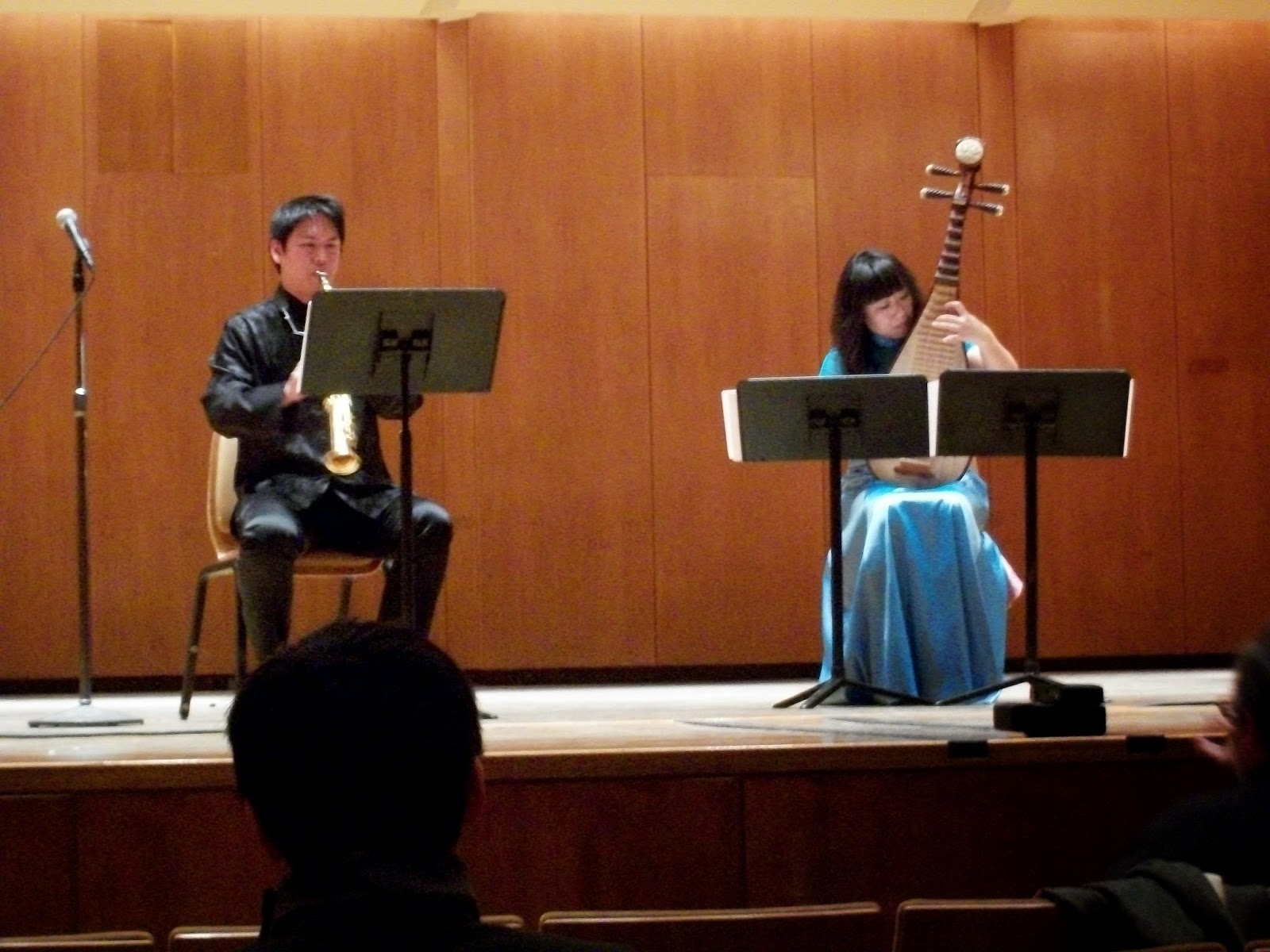Woke up bright and early this morning to hit the road to attend the 2014 North American Saxophone Alliance (NASA--clever, eh?) Conference. Which is a bit of a mouthful, so from now on, I will refer to it as Saxfest. This is my first Saxfest and I hope to get recharged (it is sort of a mini-vacation for me), pick up some inspiration, learn new things, and hear some good saxophoning.
After arriving at the campus of the University of Illinois and securing a parking permit (no sense feeding meters all day when a day pass can be procured), I headed to the Krannert Center for the Performing Arts to check-in and see what's what.
The first thing I encountered was and ensemble showcase of the UMKC Conservatory. It was lovely sounding entrance music as I got checked in, met up with a couple fellow QCA friends, and refueled my coffee cup.
After coffee and reviewing the day's schedule, my friends and I took a look at the saxophones exhibit. Here we found some vintage copy from saxophone ads for Conn, Beuscher, and Selmer companies. Also available for perusal was a collection of saxophones from the era of the man himself: Adolphe Sax.
Also on hand was this Grafton plastic saxophone. Charlie Parker used a horn like this we he hawked his good horn for drug money.
 |
| Bass saxophone. Don't see these everyday. Well, unless you own one. |
Then it was off to the Music Building for a recital of new music for saxophone. The building is rather extraordinary. My pictures don't do it justice, considering my camera is getting a bit dated (so much so that the last photo kiosk I took it to to print pictures told me that the resolution was too low. Cheeky kiosk.)
The program for this recital featured music written within the last several years. The last piece on the program was a world premier composed by Dorothy Chang, who was in the audience to talk about her piece.
New Stories for Alto Saxophone and Piano was performed by Joe Luloff and showed how versatile the instrument can be in conveying mood and imaginative landscapes.
After the recital, I wandered into a lecture about Bessie Mecklem . Bessie was one of the first female saxophone soloists who had an active performance schedule in New York. She recorded some with Thomas Edison, but unfortunately, the recordings have been lost. What was most interesting takeaway from this lecture was the prevailing attitude towards woman musicians, particularly woodwind players, at the Turn of the Century.
Not really wanting to go too far from the lecture hall because I wanted a good seat for the Jeff Coffin clinic, I stuck around for the following discussion panel.
The panel discussion, titled "D.M.A or J.O.B. Pathways to Employment in the Academy and Beyond" was interesting to listen in on. Even though I don't have current aspirations to get a DMA or to make a run for the very few jobs available in academia, I did find some inspiration in the advice given from the panelists.
From my notes: "What do people hope to gain from their musical experiences?" and "What does it mean to be a teacher?" Some interesting questions to consider.
Just after the panel discussion was the Jeff Coffin clinic. Jeff Coffin on saxophones and Roy "Futureman" Wooten on drums. They began with about 35 minutes of non-stop jazz interplay made up on the spot. Both are entertaining performers, playing with tone color, sound effects, water bottles, and comic devices all without dropping a beat. Coffin then asked us to list all of the things we heard.
The listening exercise spun out into a discussion of the Five Fundamentals.
Coffin lists these fundamentals, in order of importance, as:
1. LISTENING (all caps because it is very important and required before the others can make any sense)
2. Tone/Dynamics (including emotional dynamics)
3. Harmony--This is a huge topic, so start small and start to connect the dots.
4. Rhythm/Time
5. Articulation --This can be an extraordinary expressive device.
With practice and mastery of these fundamentals, your opportunities for expression as a musician can increase dramatically.
An inspiring and energizing first day at Saxfest!
























